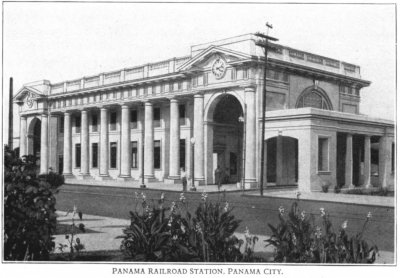The Amador Causeway is a must see tourist destination located at the southern entrance of the Panama Canal near Panama City
.
Tour Suggestion
What is the Amador Causeway?
For those unfamiliar with this Panama landmark, the Amador Causeway is both a roadway and a walking path that connects Panama’s mainland to four small islands: Naso, Culebra, Perico and Flamenco.
It is a beautiful and picturesque causeway that captures the attention of both visitors enjoying Panama vacations and locals. The roads are lined with palm trees and feature magnificent views of the Panama Canal including Panama City’s skyline, the Bridge of Americas and Panama Bay.
Building Panama’s Amador Causeway
The Calzada de Amador, known as the Causeway, was built around the same time as the Panama Canal in 1903.
The original purpose of the causeway was to prevent sedimentation in the Port of Balboa which, if left untouched, eventually would clog the southern (Pacific) entrance into the Panama Canal. The causeway was also designed as a breakwater to protect the entrance.
Because it was built at the same time as the Panama Canal, the causeway was made from 1,250 million cubic yards of rock excavated from Culebra Cut.
The United States investment in the development of Panama and in particular the Panama Canal put the Americans at a beneficial position; the United States controlled the Amador Causeway from 1915 until World War 2. The United States used the area as a military base and restricted access to just Americans. During both World Wars the U.S. Military used the Causeway as a powerful defense system.
Only in September of 1996 did the Amador Causeway become the property of Panama. At this point, Panamanians had complete access to the area.
Things to Do Along the Amador Causeway
In the last 15 years the Amador Causeway area has been redeveloped to attract locals and tourists. Vehicle traffic is restricted to one side of the causeway leaving lots of room for foot traffic to access the Causeway. Many visitors who enjoy Panama vacations also enjoy a leisure walk, jog, bike, skate or roller-blade along the Amador Causeway between all four islands. Others enjoy relaxing along the beaches and taking swims in the refreshing Pacific waters. From the Causeway, anyone can watch Panama cruises come and go through the Panama Canal.
Panama’s Amador Causeway provides wonderful views of the Bridge of Americas, Balboa Yacht Club and Panama Bay. Several projects near the Amador include a cruise port, a marina, the Fuerte Amador Shopping and Restaurant Plaza and the Fiagli Convention Centers. Numerous Panama hotels and resorts have popped up in the area as well.
Also worth mentioning is the Marin Exhibition Center of the Smithsonian Tropical Research Institute (STRI) which lets visitors get a close up look at creatures native to the country of Panama.
































